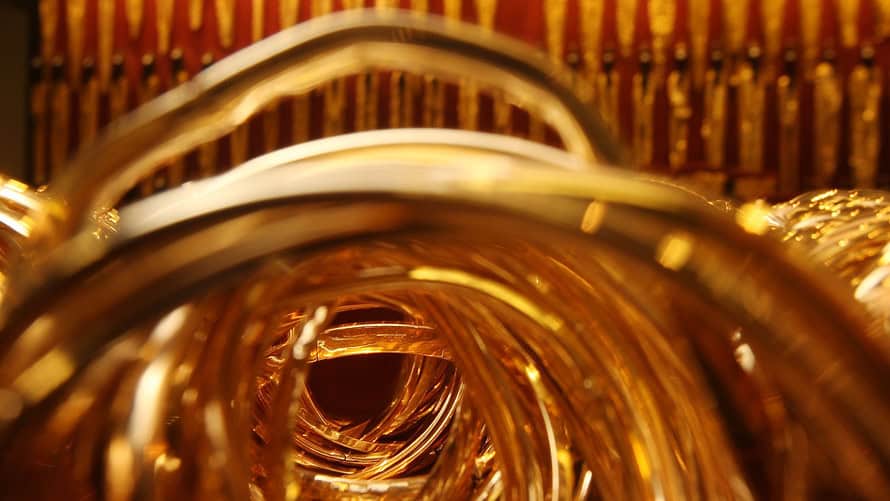
A popular dollar index climbs; metals prices trade broadly lower
Gold prices headed lower for a third straight session Tuesday, with a key dollar benchmark strengthening on the back of weakness in the euro and British pound, as traders eyed news tied to the U.K.’s exit from the European Union.
U.S. stock indexes were mixed, offering little support to the haven metal even as remarks from President Donald Trump stoked fresh anxieties about the prospects of a near-term resolution of trade tensions between the U.S. and China.
Gold for December delivery GCZ8, -0.07% was down $5.90, or 0.5%, at $1,216.50 an ounce. Gold for February delivery GCG9, -0.11% which has higher open interest volume, shed $5.20, or 0.4%, to reach $1,223.50 an ounce.
December silver SIZ8, +0.26% traded down by 5.5 cents, or 0.4%, at $14.15 an ounce. The March contract SIH9, +0.17% was down 5.8 cents, or 0.4%, at $14.285 an ounce.
The SPDR Gold Shares GLD, -0.19% and iShares Silver Trust SLV, +0.11% ETFs were each down by about 0.1%. The VanEck Vectors Gold Miners ETF GDX, -0.40% shed 1%.
The ICE U.S. Dollar Index DXY, +0.11% advanced 0.3% to 97.326, with both the euro EURUSD, -0.0886% and British pound GBPUSD, +0.0549% down versus the greenback as traders look to the latest news on Brexit developments. A firmer dollar typically dulls demand for U.S.-priced commodities, including gold.
The European Union has given approval of Britain’s divorce from the trading bloc. If the deal is given a green light by Parliament, the U.K. will then be able to focus on negotiations for the new trade and security relations with the EU after its official exit in March. U.K. Prime Minister Theresa May, however, is seen facing an uphill battle in winning parliamentary approval.
The dollar also moved higher after Federal Reserve Vice Chairman Richard Clarida said in a speech Tuesday that the U.S. central bank’s interest-rate policy should be aimed at sustaining economic expansion and that gradual interest-rate hikes are the best way forward.
A dollar-supportive and gold-negative rate increase is widely expected next month, but the expectation for the pace of rate moves next year has shifted of late. Fed Chairman Jerome Powell speaks on Wednesday.
Clarida had previously offered a relatively dovish monetary-policy outlook, saying that he sees “signs of slowing growth” and that sluggish expansion in the globe will be factored in the central bank’s calculus as it attempts to normalize interest-rate policy.
Both Clarida and Powell “conducted interviews two weeks ago that caused some shock in the markets [hurting the dollar and yields and supporting gold],” said Marshall Gittler, chief strategist at ACLS Global. “Rate expectations had been heading down ever since the Fed statement following the November [Federal Open Market Committee] meeting. That decline accelerated after Powell and Clarida were interviewed on TV.”
Next, attention turns to a late-week meeting between Trump and China’s President Xi Jinping.
“If a trade deal were to be reached, our assumption is that import duties will be lowered again, which should push down import costs and therefore be disinflationary,” said Fawad Razaqzada, market analyst at Forex.com. “That in turn should further reduce the urgency from the Fed to hike rates, and lead to a rally in bond prices and a drop in yields and the dollar. As a result, gold should react positively, especially if stock markets and the economy continue to remain under pressure.”
Other metals on Comex traded broadly lower, with March copper HGH9, +1.94% down 0.8% at $2.75 a pound. January platinum PLF9, -1.44% shed 0.4% to $844.40 an ounce, while March palladium PAH9, +3.07% fell by nearly 0.9% to $1,114.40 an ounce.


